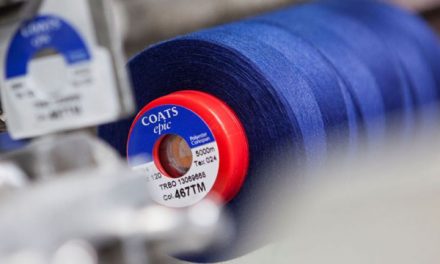 Joining Intertextile Apparel for the first time, Government agency Scottish Development International brought the very best of Scottish fabric suppliers to the autumn Shanghai fair in October 2021. The textile industry of Scotland has long been associated with quality local craftsmanship and rich heritage ties to the country’s historical culture.
Joining Intertextile Apparel for the first time, Government agency Scottish Development International brought the very best of Scottish fabric suppliers to the autumn Shanghai fair in October 2021. The textile industry of Scotland has long been associated with quality local craftsmanship and rich heritage ties to the country’s historical culture.
“We are a local government agency that aims to help Scottish companies improve their international strategy, competitiveness and business opportunities. We’re excited to be here for the first time to represent nine Scottish mills and introduce their products to the Chinese market,” said Jo Cui, trade representative at Scottish Development International while explaining their role in promoting Scottish brands.
“We describe our Scottish mills and products as having three stand-out characteristics; they are classic, premium, sustainable. In fact, six of the companies participating here have a history of more than 100 years, such as Lochcarron of Scotland, as well as Harris Tweed Hebrides; these companies provide the most classic and high-quality products,” said Cui pointing this out when highlighting what they believe are the key qualities of Scottish fabrics.
These mills pride themselves on the world-class reputation of their fabrics, meaning the products are suited towards the growing purchasing behaviour of millennial consumers who look for quality, authenticity and transparency in products. This goes hand in hand with rising levels of disposable income and the pursuit for a more premium and luxury lifestyle, which is driving the consumption of high-quality textile products in countries such as China, the US and also Europe, fair organiser Messe Frankfurt said.
The sustainability of their products has also become a crucial selling point for Scottish mills, which work almost exclusively with wool. In fact, Lochcarron of Scotland labels its products the ‘antithesis of fast fashion’ and aptly so, considering the lifespan of wool garments is said to be 50 percent longer than cotton garments, according to a global wardrobe audit conducted by The Nielsen Company on behalf of The Woolmark Company. On top of this, wool is 100 percent natural and biodegradable, making it an obvious contributor to the circular economy model. So much so, that in the Material Circularity Indicator by the Ellen MacArthur Foundation, wool gets the highest score possible, above all other fabrics.
“Our booth was very lively and we met with lots of different buyers. We received lots of enquiries which we’ll relay back to the individual companies to follow up on and continue business discussions. The fair has undoubtedly provided many opportunities for Scottish brands here and the response from this edition has given us great confidence in the market, so we have already decided to join future editions of Intertextile Apparel,” Cui explained.
Visitors and exhibitors alike expressed their optimism for the future of the Chinese market at the fair. Many noted the increasing consumer demand for premium and quality products from both overseas and domestic brands. Meanwhile, the sustainability and traceability of products dominated requirements for buyers. Together, these factors indicate bright future prospects for Scottish and other international suppliers in China’s apparel textile industry.













